While I might hold out myself to be an “adventurous” eater, my sense of adventure tends to be tempered by my borderline vegetarianism. I’m neither an ethical (“eating animals is bad for animals!”) nor a healthful (“eating animals is bad for you!”) vegetarian: I’ve simply never really enjoyed meat as a food. And so, most of the time, I don’t eat it.
In Ukraine it quickly became apparent that “vegetarian” was more of a witty anecdote — akin to “I’ve never liked the earlier Shakespearean works” — than a valid lifestyle choice, and, wishing to fit it to the Ukrainian milieu as much as possible, I resolved to be more liberal in my tastes, even if it did mean eating creatures I was unaccustomed to. Like:

I’m pretty sure I ate this fellow’s legs. Or, at the very least, the legs of a close relative. For breakfast. Like this:
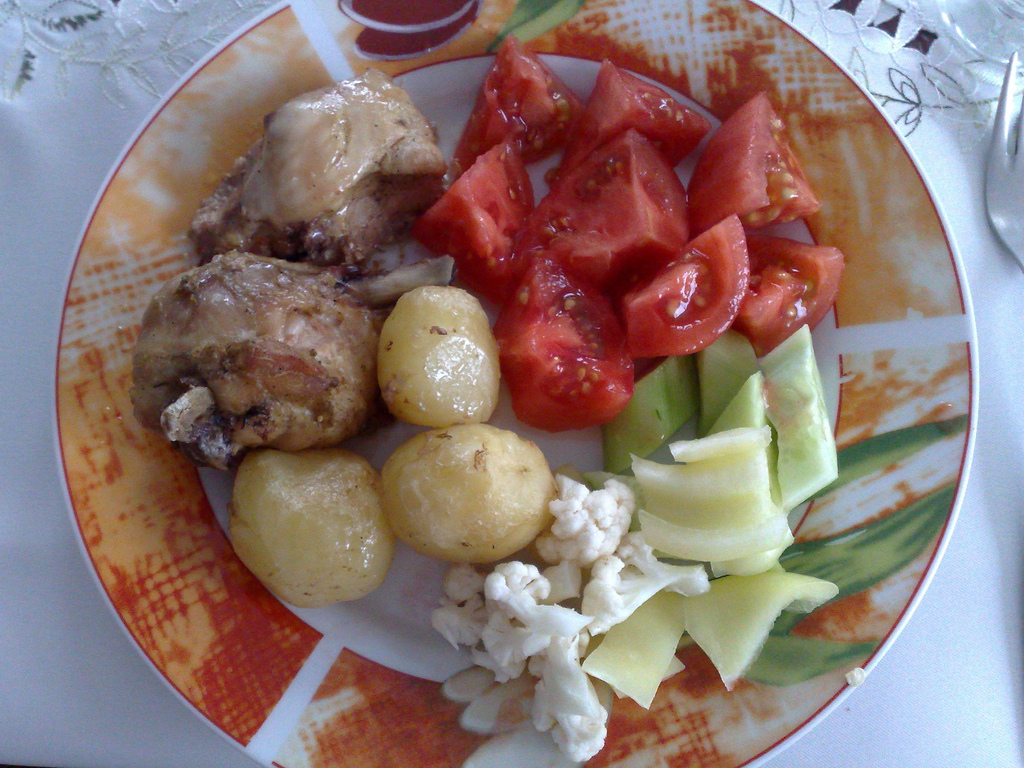
And his legs were pretty tasty. Indeed, after the second or third meal of rabbit legs I sort of looked forward to it. Even if the family was hopping around their cages just outside my bedroom window.
As it turns out, contemporary Ukrainian food — and realize I’m speaking here not of “everyday” food but more of “food you serve to relatives from Canada who haven’t been heard from in over 100 years” food — is a mixture of the food I remember my grandmother cooking (perogies, cabbage rolls, potato pancakes) with an interesting mix of things I’d never had before (or only had when Sergey was here cooking for us last fall). Like tsvikli (a relish made of beets and horseradish; very, very good), jellied meats (like it sounds: various bits of meat, in jelly; less an “acquired taste” than an “acquired conceptual approach”), and lots and lots and lots of borscht (eaten for breakfast, lunch and supper and universally excellent).
The thing I learned early on in my Ukrainian visit was “if you think the meal is over, you are wrong.” There’s always another course.
The first meal — the one we had at 10:00 p.m. after I flew in from Copenhagen — we had a huge first course of borscht, salads, bread, vegetables and more. Which seemed more than enough to tide me over until morning. And, once it was cleared away, the actual supprt itself was brought out. Followed by desserts and tea.
All of this led to the need to immediately develop hacks like “don’t eat to quickly; otherwise your plate will be refilled.” And a realization that “I’m full” is treated as a sarcastic remark meaning “I’ve hardly eaten anything; please bring more.”
Food, in other words, is taken very seriously in Ukraine: almost everything I ate over 8 days was freshly prepared from a nearby garden or butcher or fish market, and it was prepared, presented and eaten with a sort of “this may be our last opportunity to eat to for many weeks, so let’s do it well” reverence.
This applied not only to food prepared and eaten at home, but also on the road: several times I witnessed the careful and thorough consideration of menus in restaurants, with significant intra-family negotiation about what would be ordered, extending over 10 or 15 minutes, before an actual order was presented to the server. Like I said, it’s serious business.
I ate well in Ukraine, and my conception of what to eat, and how much to eat, and when to eat, and with what attitude to eat may have been permanently altered.
On my last morning in Serafyntsi I took a walk from my cousin Maria’s house to the centre of the village. It took about 15 minutes. In the heart of the village I took a moment to drink everything in; it’s hard to imagine a more idyllic place. Cue the owl hooting.
I headed back home a few minutes later, only to be greeted by Sergey in his van, worried that I’d become lost and couldn’t find my way home.
While touring the centre of Serafyntsi, my great-grandfather’s village, we happened upon a wedding party on its way to church. If I ever get married, this is the way I’d want to do it: brothers carrying bread leading a small marching band and Catherine and I in formal attire ready to bow at everyone we meet.
A week ago Saturday I set off in a convoy with various of my Ukrainian family to visit the Carpathian Mountains, a few hours north of my great-grandfather’s home village of Serafyntsi. It was a chilly day, threatening rain but never raining, but we were all in good spirits. After a stop in the town Kolomyya to visit the excellent Pysanka Museum we headed ever-higher up the valley in search of lunch, a search made more difficult by a power outage that meant most restaurants were closed. We finally drove our way out of the electrical issue, enjoyed a tasty, albeit slowly and grudgingly-prepared meal, and after lunch we set out to tour Bukovel, a newly-constructed ski resort nearby.
Our convoy got separated on the way there, and so Andrii and Victoria and I arrived first, and it was decided that Victoria and I would ascend the mountain on the chair lift. So off we set. I’m only a little afraid of heights, so it was mostly an enjoyable ride up to the top, resulting in this view:

We walked around the mountain-top for a bit, but as the weather appeared to be closing in, with rain visible several mountains off and the rumbling of thunder in the distance, we decided we’d better get down the mountain sooner than later. As we made our way down the mountain we each shot a quick photo of each other, being careful both not to drop the camera and mindful of our impending death due to lightning. Oh how happy we were.
 |
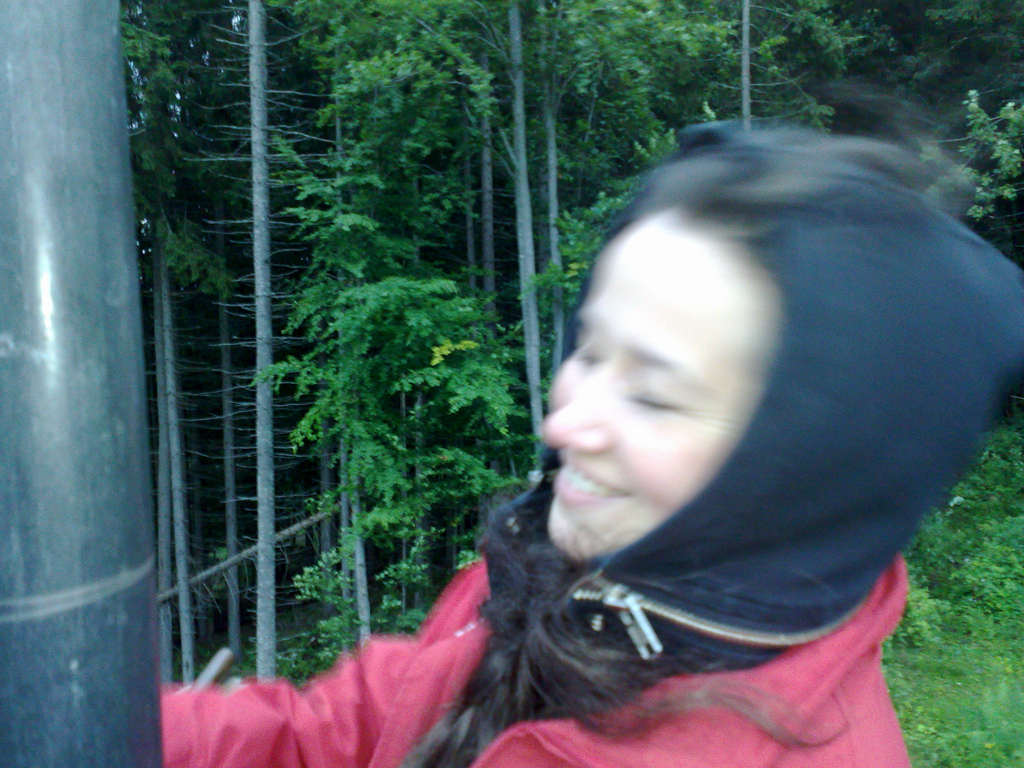 |
And then the rain came. This was what it looked like from ground-level:
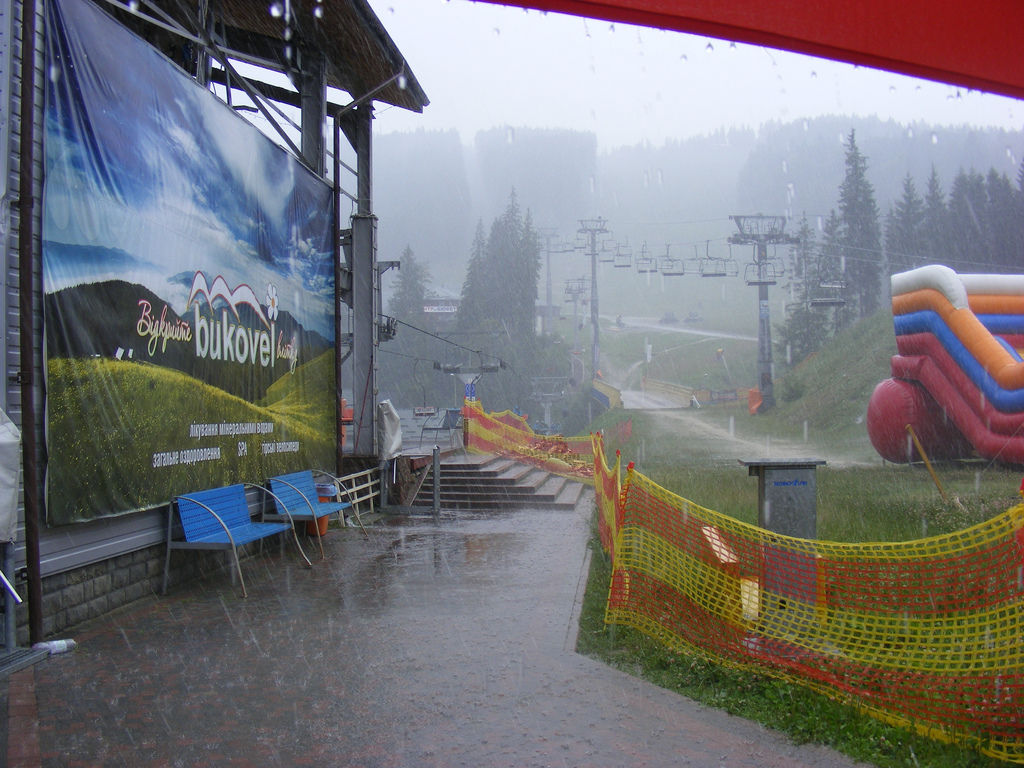
It was a heavy, determined rain, with large half-cup-sized raindrops that were unrelenting. Fortunately both Victoria and I were able to approach the situation with a sense of humour, and laughed our way down the mountain. What else could we do? When we arrived we looked like this:
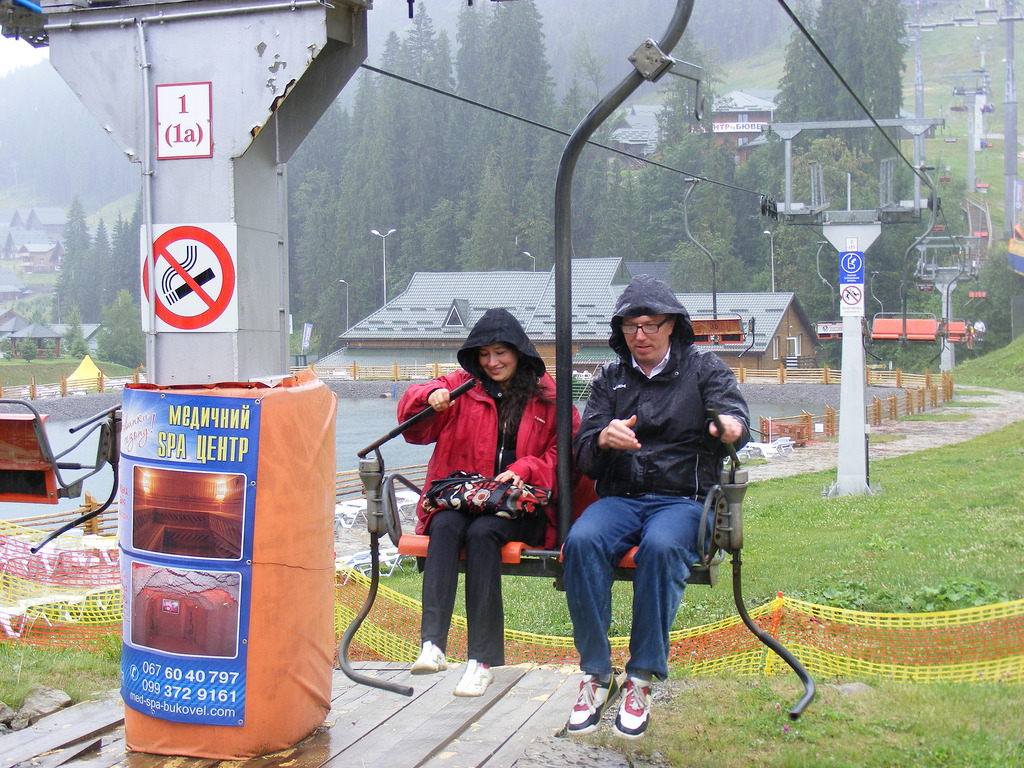
And this is what I looked like as I stumbled off the lift:
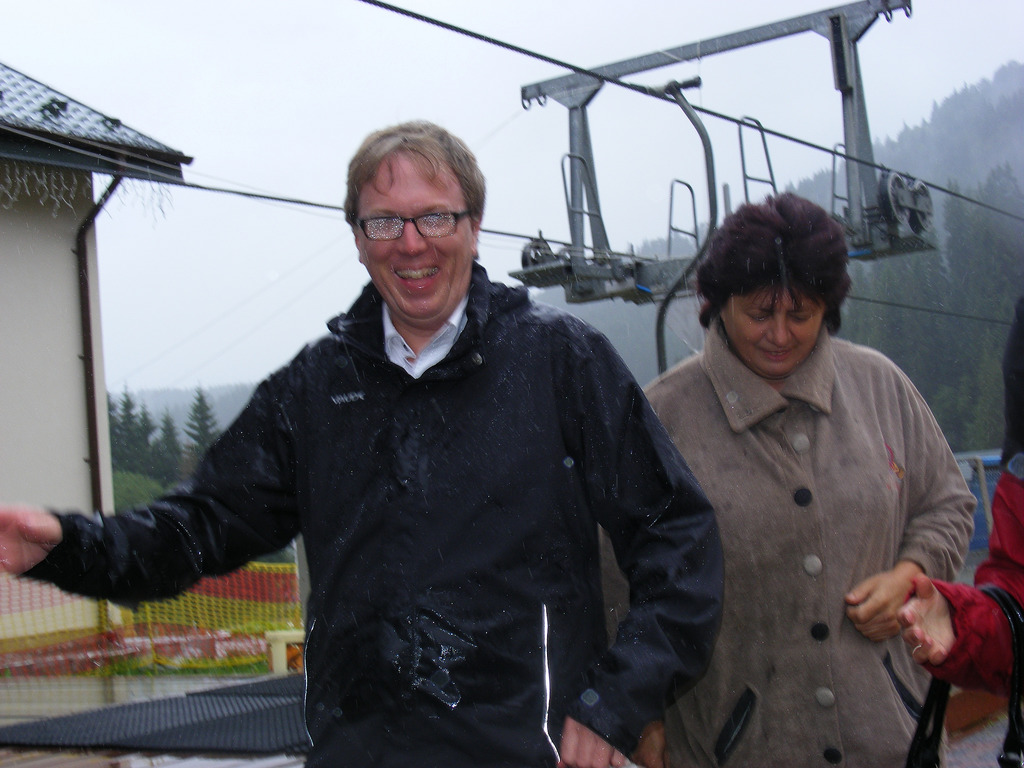
Fortunately by the time we emerged our advance team was in full force, whisking us off separately to gender-specific recovery operations. Sergey generously loaned me a pair of rain pants to replace my soaking-wet jeans (my recently-purchased German rain coat meant that the top-half of me was bone-dry, thankfully). Twenty minutes later we were enjoying a very satisfying cup of hot tea in the restaurant; as you can tell from the look on my face, it was all a great an enjoyable adventure:
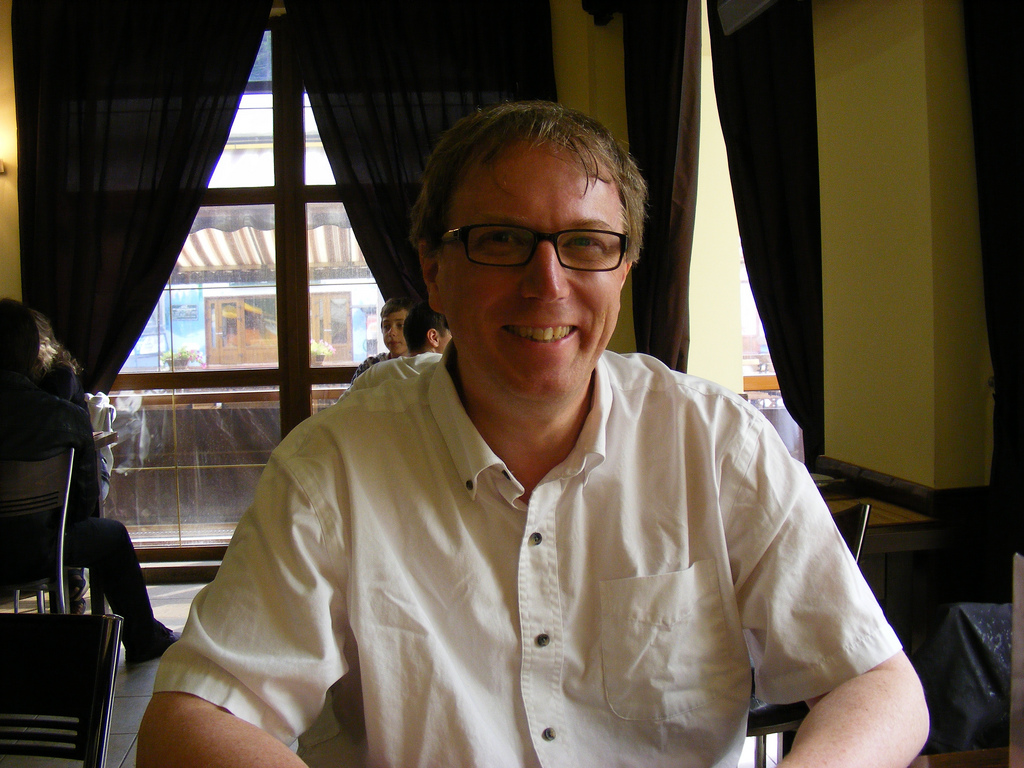
If you’re going to get caught in a rainstorm on the side of a mountain, I heartily recommend Victoria as a partner in crime. And if you need team of dedicated recovery experts to surge into action when you’re soaking wet, there’s not better family than mine.
Since I returned from Europe on Friday I’ve been hungry all the time. This is, I suspect, because my daily caloric intake in Ukraine quadrupled as the constant refrain of “eat, Peter, eat” played in the background. Here’s a photographic tour through 24 days in European food (all but two of the photos are of breakfast!).






Regular readers will know — I hope — that a sentence starting “The thing about Ukrainian women…” is something you’re unlikely to find in these pages. I’m not prone to generalizing (at least about gender and national characteristics).
But, here’s the thing about Ukrainian women.
I’m just off an eight-day immersion in my newfound Ukrainian family: a day in the Kiev suburb of Brovary followed by a 9-hour drive across the country to my great-grandparents’ home villages of Serafintsy and Potochyshche and two days staying in the home my cousin Maria and her husband Roman. Followed by a 9-hour drive back to Brovary and two days spent touring Kiev.
So I’ve spent 8 days walking and driving the streets of cities and villages, and in the close company of Ukrainian women: my cousins Vasilina, Maria and Leisa, Leisa’s daughters Olga and Victoria, and Maria’s daughters-in-law Oxana and Victoria. We’ve gone touring together, talked (in a variety of translations) family history, everyday life and Ukrainian politics, and have shared innumerable seemingly-unending lovingly prepared meals of Ukrainian food.
And here’s the thing about Ukrainian women.
As I walked the streets of the country I was faced with women whose gaze, universally, seemed to reflect a stoic burden.
It’s a hard gaze to do justice to in words, but suffice to say it’s sort of the opposite of smiling. It’s perplexing to encounter coming from North America where, in my cousin Sergey’s pantomime, people are all bubbly and over-communicative (picture Sergey here looking all bubbly and over-communicative).
It’s hard to imagine, faced with this ever-present stoic gaze, that there would ever be a window to communicate beyond: it seems like an impenetrable emotional wall surrounds every woman in the country.
And, actually, the men too.
But here’s the thing about Ukrainian women (and men): once you’re around the supper table the stoicism gives way to an open-hearted smile, a warmth that reveals wit, candor, and a sort of all-compassing beauty that, when you first see it, seems completely improbable by contrast.
In eight days in the company of delightful Ukrainian women (and their men), I’ve seen — and bathed in the warmth and humour of — a welcoming spirit that’s equally hard to describe.
And that discloses the stoic gaze to be far more complex than I’d originally assumed: it’s not emotionlessness, but rather the front face of a fascinating and complex character.
Once you know what’s lurking beneath the surface, walking the streets of the cities and villages becomes a far more interesting experience, for you realize that in those eyes is, yes, the weight of the world, but also, with the inside face, a kind of deep engagement that makes our bubbly over-communicative North Americaness seem like a flimsy facade.
I will miss it.
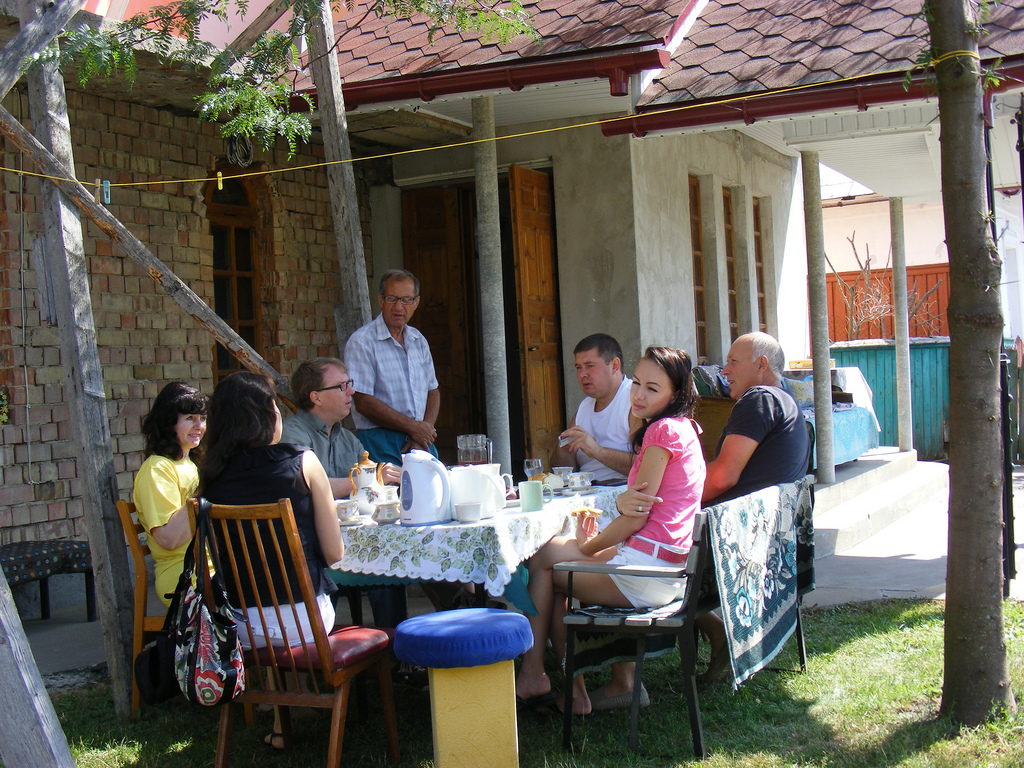
I’ve been using the web service TripIt for several years: it’s a good way of organizing and sharing travel details (a lot easier than trying to manage a lot of emails) and its ability to parse air and hotel confirmations into structured data is impressive.
TripIt offers a $49/year TripIt Pro which is available with a 30-day trial, so, given that I was setting out on a 24-day complex trip, it seemed like a good chance to try it out.
Among the “Pro” benefits is what seems to be a throwaway perk described as “Complimentary 1-year membership to Regus Gold”:

There’s almost no information about this feature on TripIt’s website (which is why it seems like a throwaway), but it turns out that this is actually a pretty valuable benefit if you find yourself in a a lot strange cities with need for a desk, wifi and coffee. The “business lounges,” it seems, are a sort of “gateway drug” to upsell Regus’s short-term office product: I’m sitting in the lounge in Frankfurt in the lobby of an office complex as I type this, in something called a ThinkPod that looks like this:
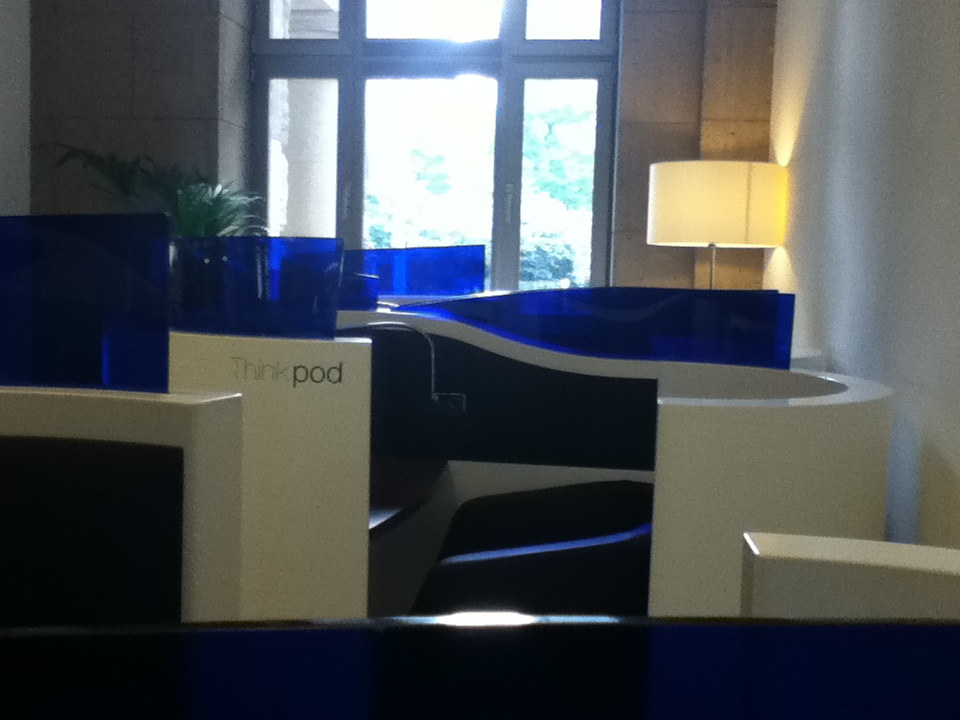
It’s got power, a comfortable chair, a desk, and 15 down / 18 up wifi. What more could I need? To get here I caught the S8 from Frankfurt Airport (4.10 EUR fare, buy from ticket machines on the platform) to the main train station (Hauptbahnhof) and walked about 2 minutes. I showed the desk clerk my Regus registration email, and, shazam, I was good to go.
My TripIt Pro 30-day trial expires in a few days, and I’m not sure I’ll up for the $49/year fee, as I don’t expect to be traveling a lot over the next year (yes, I know, I say that all the time) and I haven’t found TripIt Pro’s other trip-monitoring and alerting features particularly useful (albeit perhaps because my trip has gone well so far). But if you’re looking for handy workspaces in cities around the world, you might want to take a look at it.
I arrived safely in Ukraine on Wednesday night after a smooth an efficient pair of flights on airBaltic — Copenhagen to Riga and Riga to Kiev — and was met at the airport by my cousin Aleksandra, her husband Sergey, and son-in-law Aleksander.
Yesterday I got a thorough tour of Brovary, the Kiev suburb where they live, and today we head cross-country to Serafyntsi — an eight hour drive — to visit my Potiahaylo relatives in the village where my great-grandfather was born.
We’re heading into a land of no bandwidth for a while, so expect radio silence over the weekend.
I’ve had the privilege of visiting my friends Olle and Luisa here in southern Scandinavia — sometimes Denmark, sometimes Sweden, depending on where the wind has taken them — every year for, well, as long as I can remember. One year I visited twice. I’ve met their brothers and sisters and parents and aunts and uncles. I’ve been to their birthday parties. They’ve been to visit us — as artists in residence — in Prince Edward Island. They are among my oldest and dearest friends, and I hope I can still be visiting them when we are all in our 90s.
Several years into my Øresund experience I met Jonas, also from Malmö. We ended up at the same reboot conference dinner one year, sat at the same table, and I chipped in for cab fare to get him home. He was there the next year too. And then Oliver and I met up with him in London. And then the next year in Malmö. Oliver and Jonas and I went to CC Camp last year outside Berlin. And Jonas was here in Malmö again this year, where we had a great experience making wood type, and a box to hold it. Jonas too is a good friend and a fellow traveller, and it’s always wonderful to see him, no matter the country we find him in.
When Catherine and I were again here in Malmö, for the final reboot conference, we met Olle and Luisa’s friend Morgan: he drove us up to Ladonia and we hiked down to the seashore together. Since then Morgan has become a dear friend too. Oliver and I met him in Berlin for supper. He was there in Berlin again last year when I was there in February. And he graciously invited me to be a guest in his house on this trip; I’ve enjoyed staying with him (and his excellent cat Alfred) for the last 5 days: he’s provided me with a place to lay my head, excellent food and good company.
Arriving in Malmö last Friday night and showing up at Olle and Luisa’s apartment for supper with all of the above truly felt like walking next door — albeit a very long next door — to continue a set of friendships the only unusual part of which is that they exist separated by unusually large amounts of geography and time.
Today was my last full day of this trip here — I leave for Ukraine tomorrow morning — and we finished it grand style. Luisa and Olle and I took the train up to Helsingborg to visit Fredriksdal Museums and Gardens and the Grafiska Museet Helsingborg within it.
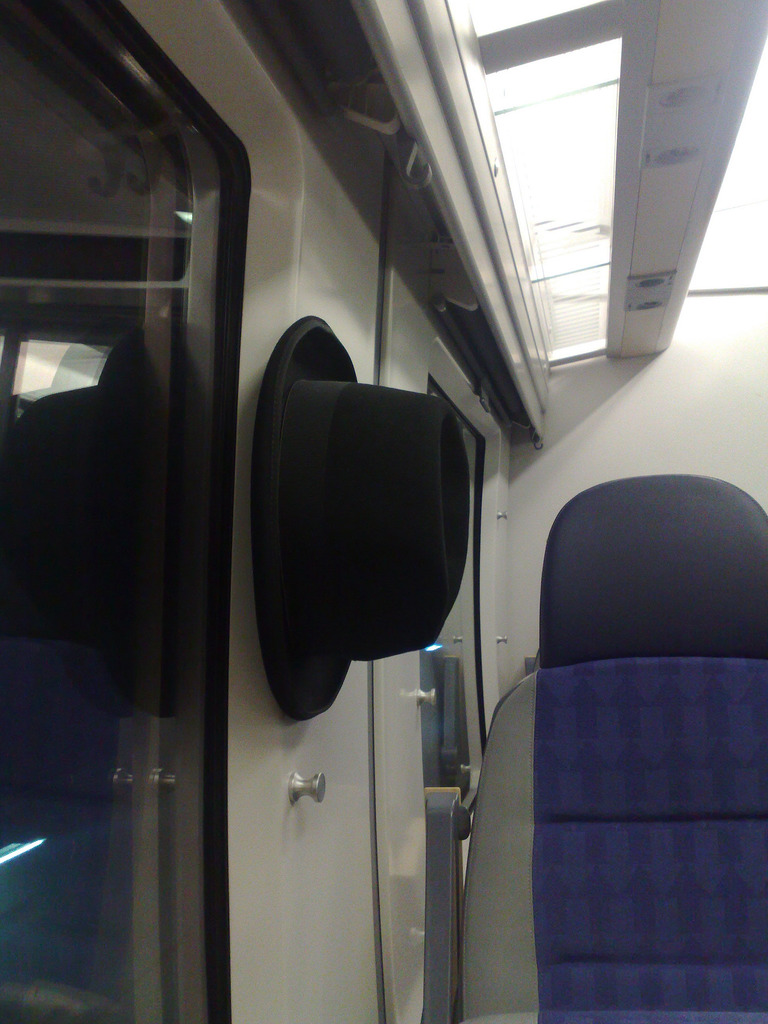
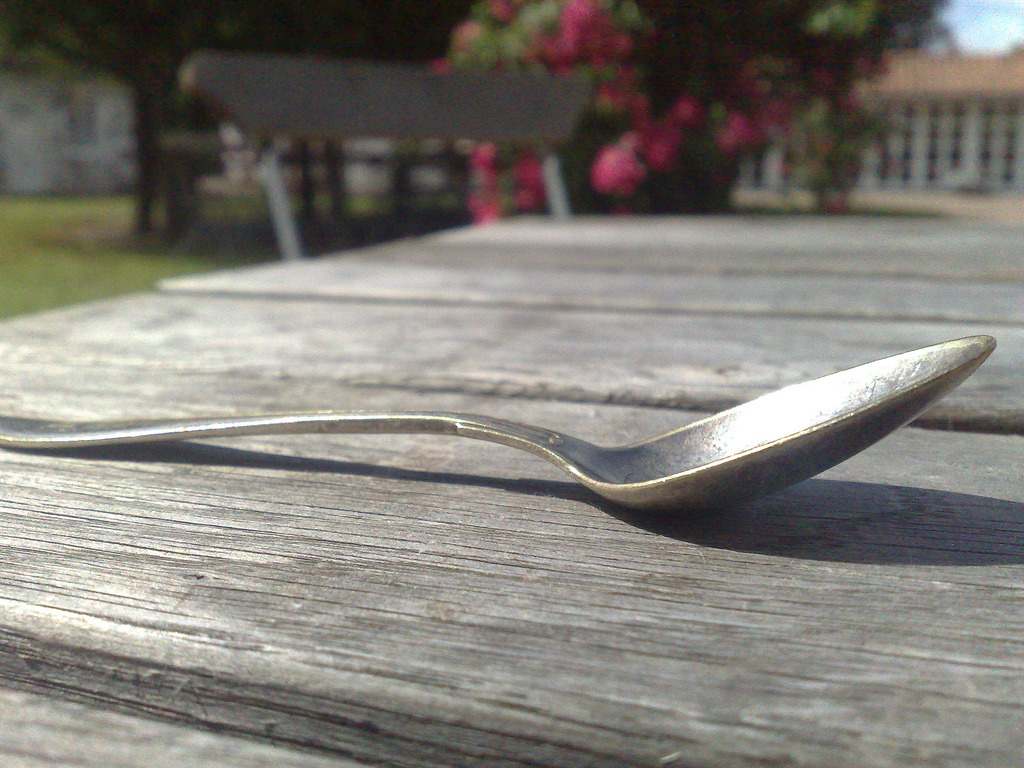
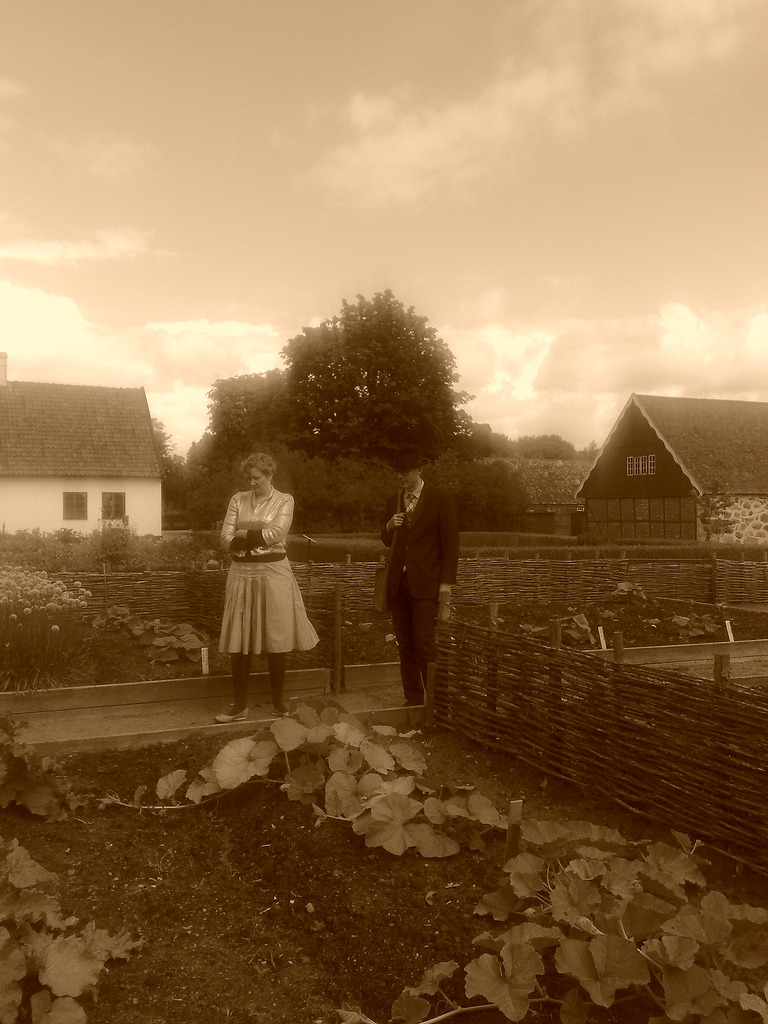
Oliver and I had visited the museum last year, and I had an inkling that they had a Golding Jobber press similar to my own there; when it popped up on Luisa’s list of possible things to do, I think the smile on my face made the visit inevitable. The Grafiska Museet, as it turns out, does have the sister of my Golding Jobber No. 8 in its collection: it’s a fine specimen, about 20 years older than mine, and much more feature-complete.
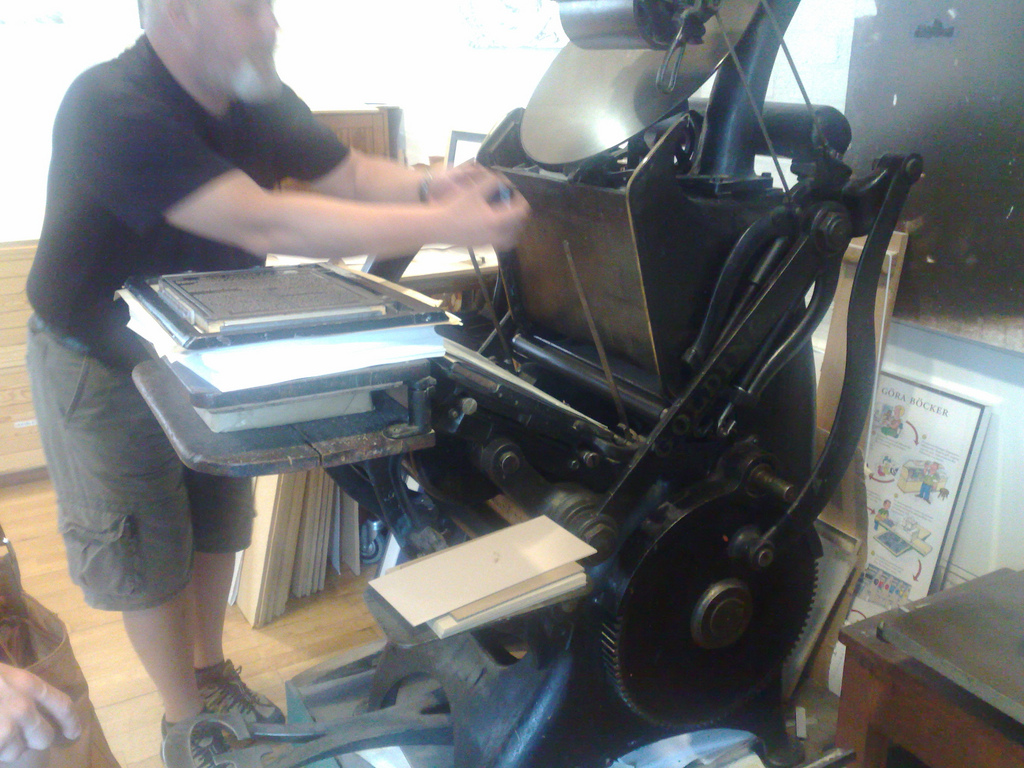
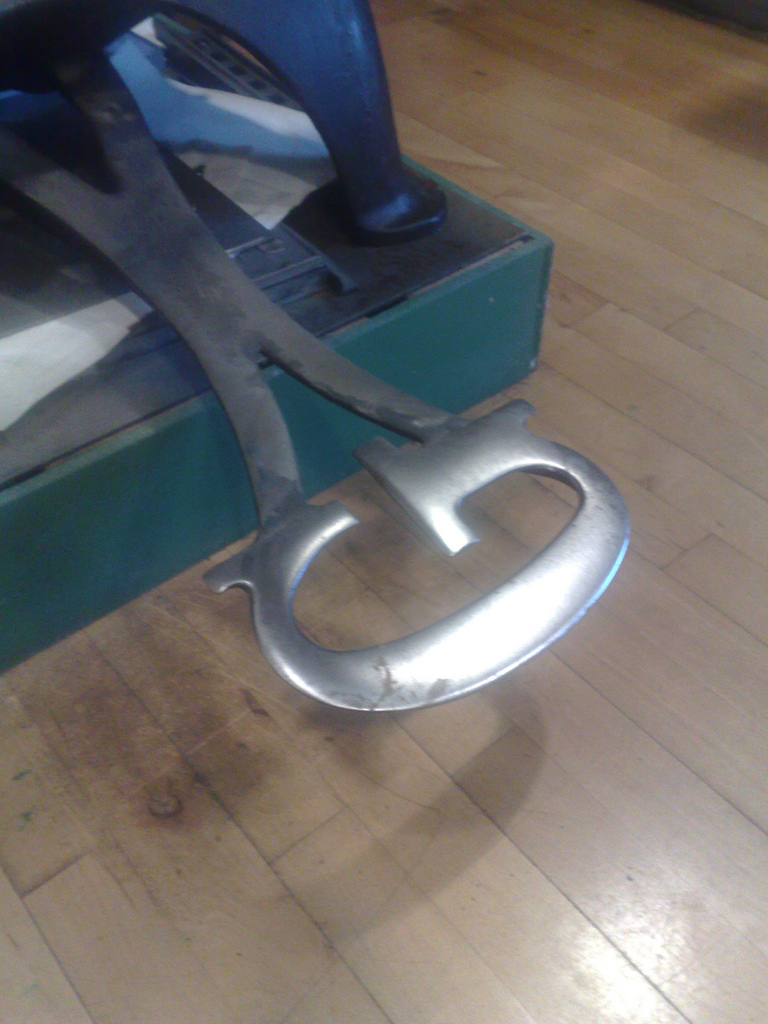
I showed them how to locate the serial number and I’ve emailed it off to me Golding Jobber guy to see if he can find its birth date. I got to know a little more about the museum and Olle and Luisa got a cooks tour of the Intertype machine and, as we readied to depart, the printers at the museum made a lovely gift for me of a collection of wooden and Bakelite type from their collection of pied type.
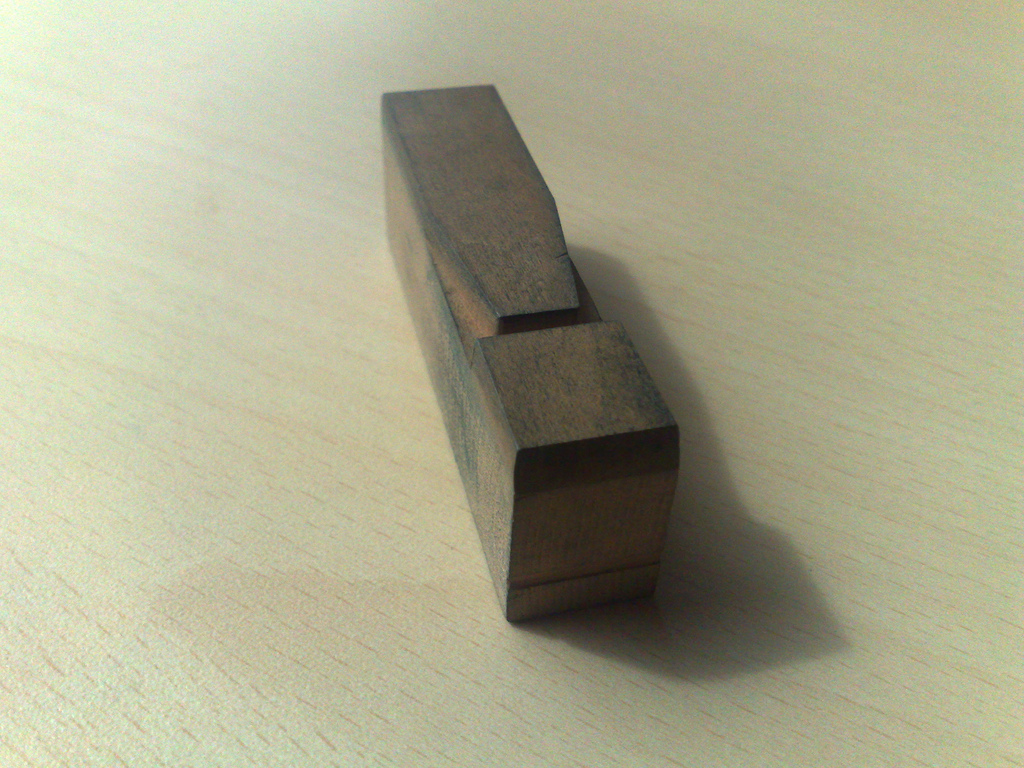
After the museum we had an excellent lunch by the sea, took the train back to Malmö, and finished up with coffee at Lilla Kafferosteriet, one of my favourite places for coffee.
Tonight, as has become a small tradition, Morgan served crayfish and schnapps and he and Olle and I wiled away the evening talking about love, relationships, geek tribes, creating safe spaces and experiences for kids who are different, and all manner of other things. It was a lovely way to end the day.
I’ll saddle the horses in the morning and, after a final breakfast with my nordic tribe, I’ll jet off to Ukraine via Latvia for the next step of this year’s great adventure.
One hundred and four years ago my great-grandfather Ivan Potiahaylo, a teenager, left Ukraine for Canada. We know little of how or why he left. As far as we know he was never in contact with his Ukrainian family again. He died in 1940 at the age of 46. The same age I am now. My father was 3 years old at the time; he remembers going to the funeral. Here’s his record in the 1911 census in Fort William, Ontario, where he settled:
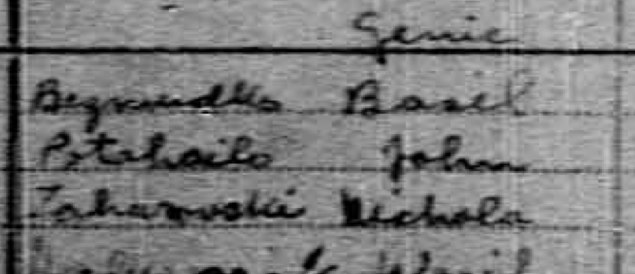
He had two children, and of those children it was only my grandmother who had a child of her own, my father. Other than his birthplace of Serafintsy and his birthdate (tomorrow, July 17, in either 1891, 1893 or 1894 depending on the source) we know nothing else of his life. It has always seemed like a miracle to me that he was, somehow, able to leave the remote rural western Ukraine and make his way to Canada. It’s hard to imagine even the simple logistics of travel.
Last year, in another sort of miracle, an email from Ukraine:
Hello Piter! I write you from Ukraine.
A woman named Aleksandra writing. Over subsequent emails we established that we share the same great-great-grandfather, and therefore are third cousins. She found me through the page about my great-grandfather in the Rukapedia. The first contact in over a century from our Ukrainian family.
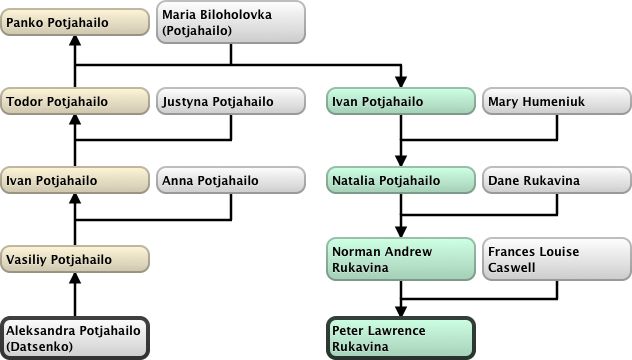
Fast-forward 7 months and her husband Sergey is in Prince Edward Island learning English, with hopes of finding work. He becomes part of our family. We fly to Ontario and meet my parents. Visit the grave of Aleksandra’s grandfather near Simcoe (he also someone who came to Canada never to return to Ukraine). Spend Christmas together.
In two days I will land in Kiev. Sergey will meet me at the airport. I will meet Aleksandra for the first time. We will drive across Ukraine and see the birthplace of my great-grandfather. And meet the family that remains there to this day.
I’m both terrified and very excited.
 I am
I am